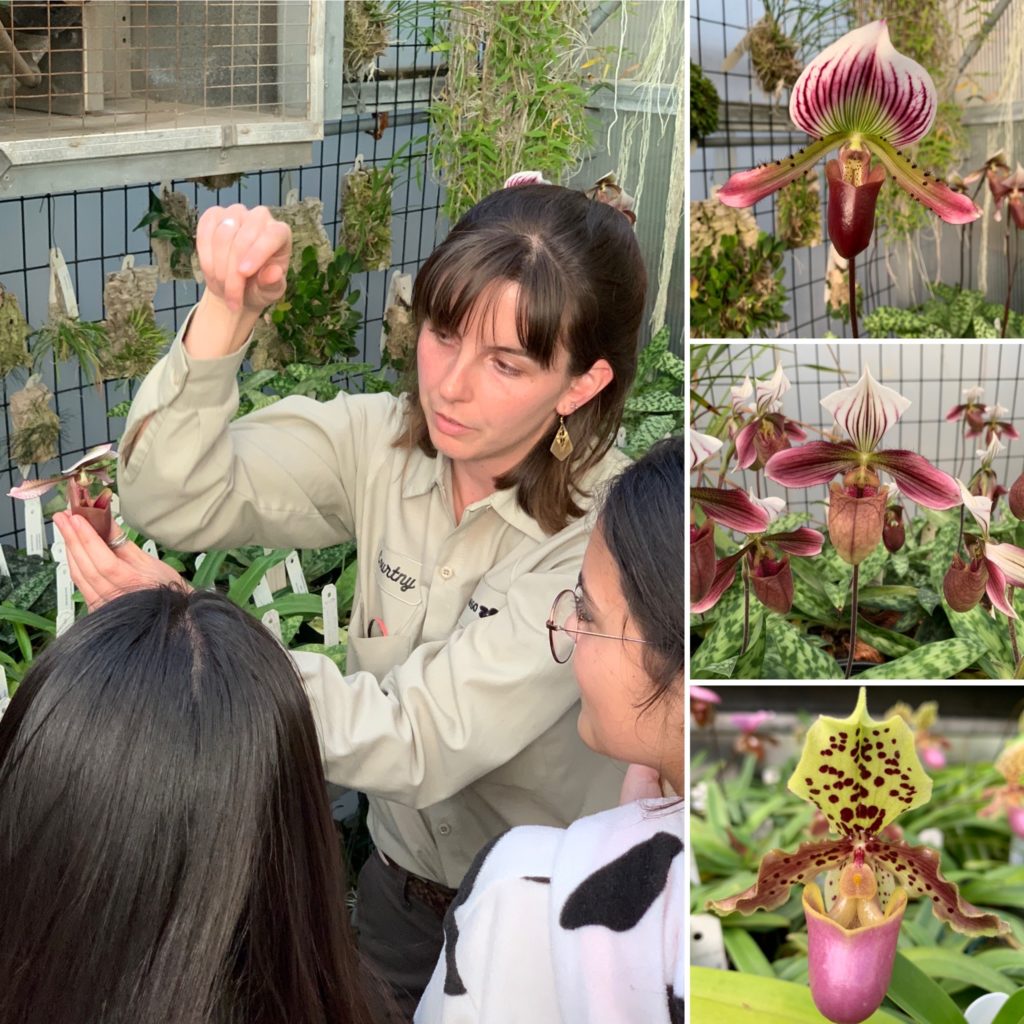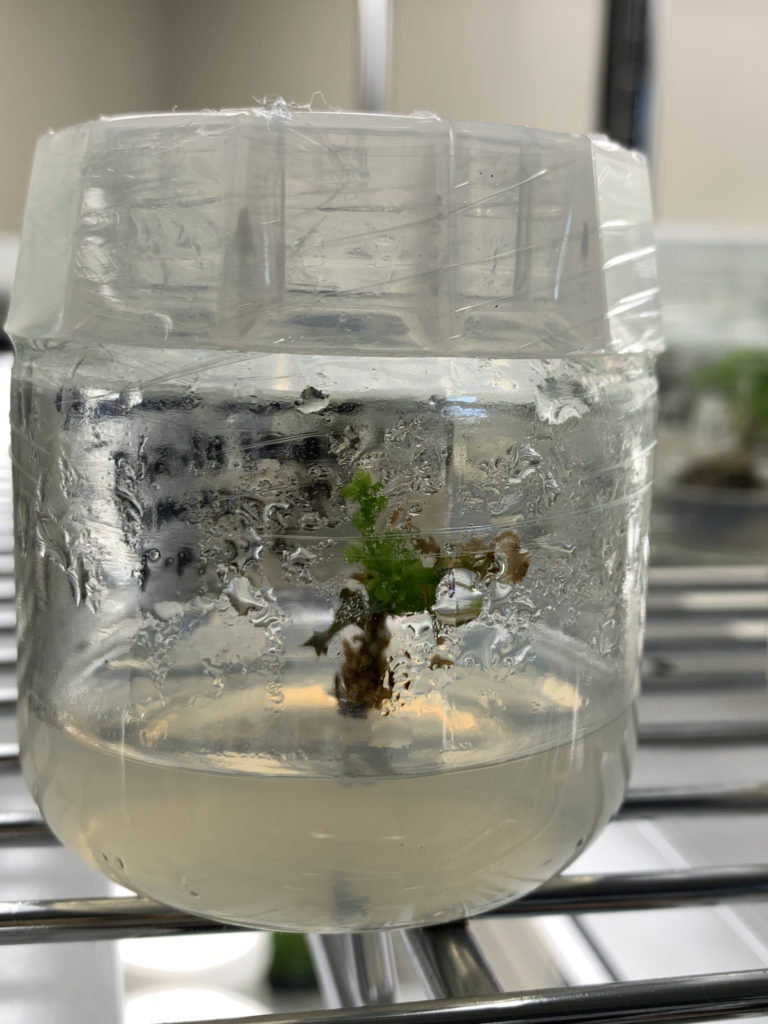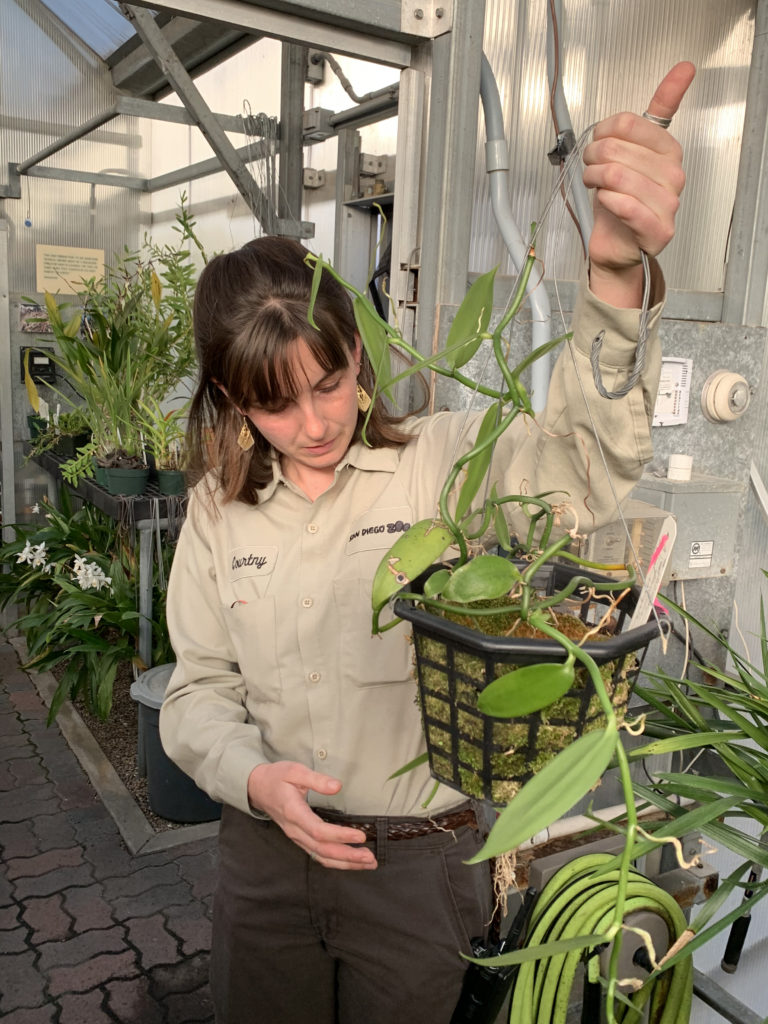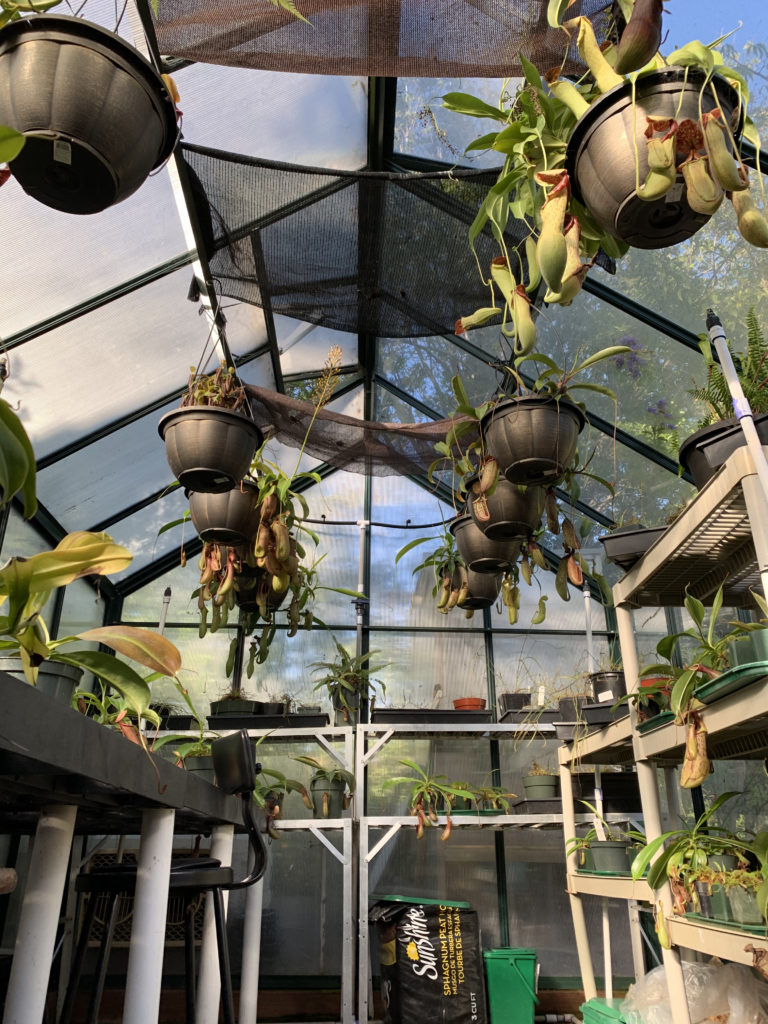
Zoo InternQuest is a seven-week career exploration program for San Diego County high school juniors and seniors. Students have the unique opportunity to meet professionals working for the San Diego Zoo, Safari Park, and Institute for Conservation Research, learn about their jobs, and then blog about their experience online. Follow their adventures here on the Zoo’s website!

San Diego Zoo has a wide variety of orchid species ranging from orange cattleyas to laelia orchids. The Zoo horticulturists do a fantastic job caring for these plants through their life so they can share the beauty of the botanical collection with guests and visitors.
Have you ever heard of an “orchidist”? Courtny Achenbach is a horticulturist (someone that cultivates and manages gardens) specializing in the caretaking of orchids. At the Zoo, Ms. Achenbach works with approximately 600 to 700 different species of orchids, though mainly she works with the Cypripedium genus, commonly known as lady’s slipper. One aspect of her job is the daily maintenance of these plants, which includes watering, repotting, and the cleaning of orchids. This also involves keeping inventory of materials and the record keeping of orchids, the more “desk job” aspect of her work. Ms. Achenbach spends some time in the lab to perform the task of micropropagation, where she uses agar (a growth medium mimicking fungi) to help promote the growth of orchids. Through the work of Ms. Achenbach and her fellow horticulturists at the Zoo, every walkway is lined with beautiful vegetation, every animal is provided the appropriate plant life for consumption, and the research of both local and exotic flora is continued.

Ms. Achenbach is holding up a species known as Dracula Simia or Monkey Orchids. These flowers resemble a monkey’s face which is how they got their name! They have an orange fragrance and originate in South America.
Ms. Achenbach knew even before she began studying biology at San Diego State University that she wanted to work at the San Diego Zoo. Specifically, her dream job was working with orchids, but she knew her chances were slim; there was only one orchid specialist who had been there for 38 years. Just in case she couldn’t get that position, she loaded up on chemistry courses to give herself options. She began at the Zoo working as a groundskeeper, waiting six months before applying for a job share with the horticulture department. This system lets employees at the Zoo split their time between departments and move fluidly between different roles. Eventually, the job of working with orchids opened up. Quite a job it was, as the Zoo has thousands of orchids, and even then their collection doesn’t come close to representing all the known orchid species. This is why Ms. Achenbach doesn't call herself an ‘orchid expert’, she’s not sure if it's possible for someone to really be an expert on such a massive and diverse family of plants.

Out of the 25,000 species of orchids, there is one in particular that has captured Ms. Achenbach’s attention. With a name inspired by their delicate and feminine look, lady’s slipper orchids can be divided into five genera. Out of these, it is the Paphiopedilum genus from Southeast Asia that Ms. Achenbach works with the most. Lady’s slipper have small pouches that easily make them look like a carnivorous plant, however, this pouch is actually a funnel for pollinators. They have a symbiotic relationship with fungi, which aids them in breaking open their seeds and exchanging nutrients between the two. Unlike most orchids, that are sometimes deemed “palm tree jewelry”, lady’s slipper are terrestrial and extremely sensitive to disturbances in their habitat. This means that it is more likely for them to be affected by threats of habitat destruction and orchid poaching. Furthermore it has made them the most trafficked orchid. In some cases, there are only about 50 lady’s slipper orchids in populations. The reason why they have managed to prevail in the wild is because of micropropagation, which is the practice of taking small pieces of one specific subject and using tissue culture to produce many plants.

An orchid in their early stages of growing at the micropropagation lab. Orchids can create and produce millions of seeds, but only a few actually become a mature orchid plant. Different types of orchids have varied life cycles, and bloom for about two to three months.
Ms. Achenbach has much to love about her work, but her favorite aspect of her job is what she does in the micropropagation lab. She loves to experiment with growth media to insure the proper germination and development of her orchids, and it allows her to express her creative side. Yet another reason that Ms. Achenbach loves mixing the growth media is because she gets to use the chemistry she studied in school. We also learned that Ms. Achenbach has a soft spot for carnivorous plants because they amazingly managed to evolve independently, and adapted to their low-nutrient environment by gaining the ability to digest. Finally, we had to know what Ms. Achenbach’s favorite orchid was, of course! It is called the Pleurothallis schiedei, and it is a gorgeous flower with three petals in a turbine structure with white opaque bulbs hanging underneath each petal. She believes it may be trying to mimic insect eggs with the hanging bulbs, but it hasn’t been confirmed yet.

Ms. Achenbach works to conserve orchids by caring for the many exotic species in the orchid greenhouse. Unfortunately, orchids are a common plant to poach, as they are in demand due to their beauty. Many orchid species are wrongfully and unlawfully removed from their natural habitats, and brought into the United States to be sold. This puts certain species at risk of extinction, especially because many species have a limited number of individuals in their population. In order to prevent further poaching of orchids, it is essential for the public to be educated on the orchids’ plight and buy from ethically sourced retailers if they plan to purchase an orchid as a houseplant. Additionally, when buying vanilla (which is an orchid), it is important to know where the product is sourced because some retailers buy unethically harvested vanilla.

Ms. Achenbach had many wise words to share with us. She listed a few things that would’ve made her journey to becoming an orchid specialist much easier. While in school, she wished that she participated in more extracurricular activities. She advises that we get the most use out of our resources at school, such as professors. Ms. Achenbach suggests that we build close relationships with our professors and teachers to network and build lots of connections. She wishes that she was more involved and looked deeper into the available opportunities at the time. Ms. Achenbach was not originally planning on studying plants. Prior to focusing on biology she studied linguistics (Korean in particular). Discovering that there were not many jobs to choose from, she switched to biology for the purpose of having more job options. She encourages us to pick a major that gives you a variety of opportunities, as well as discovering your passion early.
Thanks to Ms. Achenbach the interns were able to learn about a very under-appreciated part of the Zoo. From the micropropagation lab, to the unique carnivorous plants, to the lush orchid house, the interns were happily surprised by horticulture’s role in the Zoo. Ms. Achenbach is very passionate about her career and does a great job sharing her love of orchids to all, advocating for both their conservation and appreciation. Ms. Achenbach leads by perfect example for anyone aspiring to have a job with plants.

Ms. Achenbach and the interns learning about amazing orchid species and posing in their Halloween costumes outside the San Diego Zoo orchid greenhouse!
Week Five
Fall Session 2019




